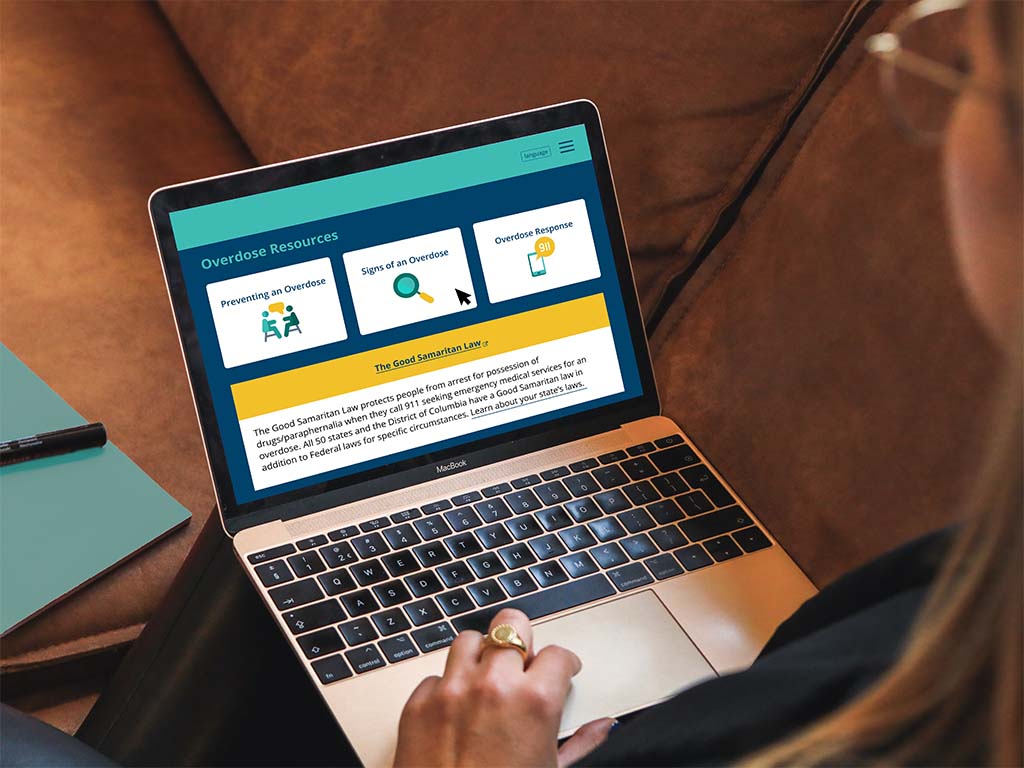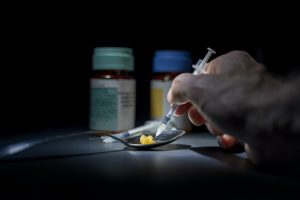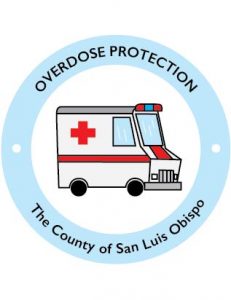Preventing Opioid Overdose Deaths

Overview
 The San Luis Obispo (SLO) Opioid Safety Coalition, in collaboration with the Cal Poly Digital Transformation Hub (DxHub) powered by Amazon Web Services (AWS) has designed a web app that provides people with access to opioid overdose response training and a complimentary Naloxone kit, an overdose reversal medicine, confidentially delivered to their front doorstep. This empowers people to be ready, able, and equipped to respond to an overdose event enabling them to save a life. The SLO Opioid Safety Coalition is an initiative formed by San Luis Obispo County in 2016 to address the local epidemic of opioid misuse in San Luis Obispo County. The coalition is comprised of a diverse group of community members such as Public Health Department members, law enforcement, and educators who have a passion for reducing prescription drug misuse and overdoses in SLO County
The San Luis Obispo (SLO) Opioid Safety Coalition, in collaboration with the Cal Poly Digital Transformation Hub (DxHub) powered by Amazon Web Services (AWS) has designed a web app that provides people with access to opioid overdose response training and a complimentary Naloxone kit, an overdose reversal medicine, confidentially delivered to their front doorstep. This empowers people to be ready, able, and equipped to respond to an overdose event enabling them to save a life. The SLO Opioid Safety Coalition is an initiative formed by San Luis Obispo County in 2016 to address the local epidemic of opioid misuse in San Luis Obispo County. The coalition is comprised of a diverse group of community members such as Public Health Department members, law enforcement, and educators who have a passion for reducing prescription drug misuse and overdoses in SLO County Problem
 Opioid abuse is a complex problem that impacts a broad spectrum of society, cutting across income and age groups, making overdose prevention hard to target and address. California experienced 3,244 opioid-related deaths in 2019 with San Luis Obispo County incurring 21 deaths the same year. In 2020, fatal overdoses more than doubled in the county with 55 opioid-related deaths, likely due to increased use and isolation during the COVID-19 pandemic. Naloxone, an inexpensive opioid overdose reversal medicine that instantly reverses potentially fatal overdose symptoms, is easy to use by the general population with minimal training. Despite this, access and administration of Naloxone by non-traditional first responders, like family and friends, is limited due to a lack of awareness and availability of the medication.
Opioid abuse is a complex problem that impacts a broad spectrum of society, cutting across income and age groups, making overdose prevention hard to target and address. California experienced 3,244 opioid-related deaths in 2019 with San Luis Obispo County incurring 21 deaths the same year. In 2020, fatal overdoses more than doubled in the county with 55 opioid-related deaths, likely due to increased use and isolation during the COVID-19 pandemic. Naloxone, an inexpensive opioid overdose reversal medicine that instantly reverses potentially fatal overdose symptoms, is easy to use by the general population with minimal training. Despite this, access and administration of Naloxone by non-traditional first responders, like family and friends, is limited due to a lack of awareness and availability of the medication.
Innovation in Action
Solution
 To provide opioid information, overdose training, and Naloxone access, the team designed a web application that provides educational content and a way for people to access Naloxone near them in SLO County. The system uses Amazon S3 to host pages that contain video and text content to inform people about how to prevent an opioid overdose and how to use Naloxone to assist someone experiencing an overdose.
It also presents information about SLO area resources that have Naloxone available for pickup or one-click home delivery via the mail. People interested in having Naloxone delivered to them can fill out a form with their name and address with the option to include a cell phone number so they can receive text notifications about the status of their order. This confidential
information would only be accessible to county health care professionals administering the program.
Naloxone mail order requests are stored in an Amazon DynamoDB table, which is serverless and scalable to accommodate any number of orders. AWS Lambda manages the sharing of data between the React app and Amazon DynamoDB for cost-effective and easy deployment of the solution. When a person creates a new order on the web app or the shipping status is changed, Lambda uses Amazon SNS to send a text message to that person if they have opted in to receive messages. This provides the person using the app with everything they need to respond to an overdose.
To provide opioid information, overdose training, and Naloxone access, the team designed a web application that provides educational content and a way for people to access Naloxone near them in SLO County. The system uses Amazon S3 to host pages that contain video and text content to inform people about how to prevent an opioid overdose and how to use Naloxone to assist someone experiencing an overdose.
It also presents information about SLO area resources that have Naloxone available for pickup or one-click home delivery via the mail. People interested in having Naloxone delivered to them can fill out a form with their name and address with the option to include a cell phone number so they can receive text notifications about the status of their order. This confidential
information would only be accessible to county health care professionals administering the program.
Naloxone mail order requests are stored in an Amazon DynamoDB table, which is serverless and scalable to accommodate any number of orders. AWS Lambda manages the sharing of data between the React app and Amazon DynamoDB for cost-effective and easy deployment of the solution. When a person creates a new order on the web app or the shipping status is changed, Lambda uses Amazon SNS to send a text message to that person if they have opted in to receive messages. This provides the person using the app with everything they need to respond to an overdose.
Conclusion
Supporting Documents
The DxHub innovation process based on Amazon’s Working Backwards methodology results in several artifacts that help inform and guide the result. Below is a description of each and their purpose in the process.
| Press Release | During the Innovation Workshop, a fictional Press Release is drafted. This is a tool used to define the solution and why it matters to the customer. |
| Story Board | A series of frames are designed to illustrate the problem and the impact of the solution visually. |
| Architecture Diagram | A diagram that describes the technical components needed to implement the solution. |
| Source Code | All of the code and assets developed during the course of creating the prototype. |
| UI/UX Mockup App UI/UX Fulfillment Portal | An example of the user interface that demonstrates the solution. |
